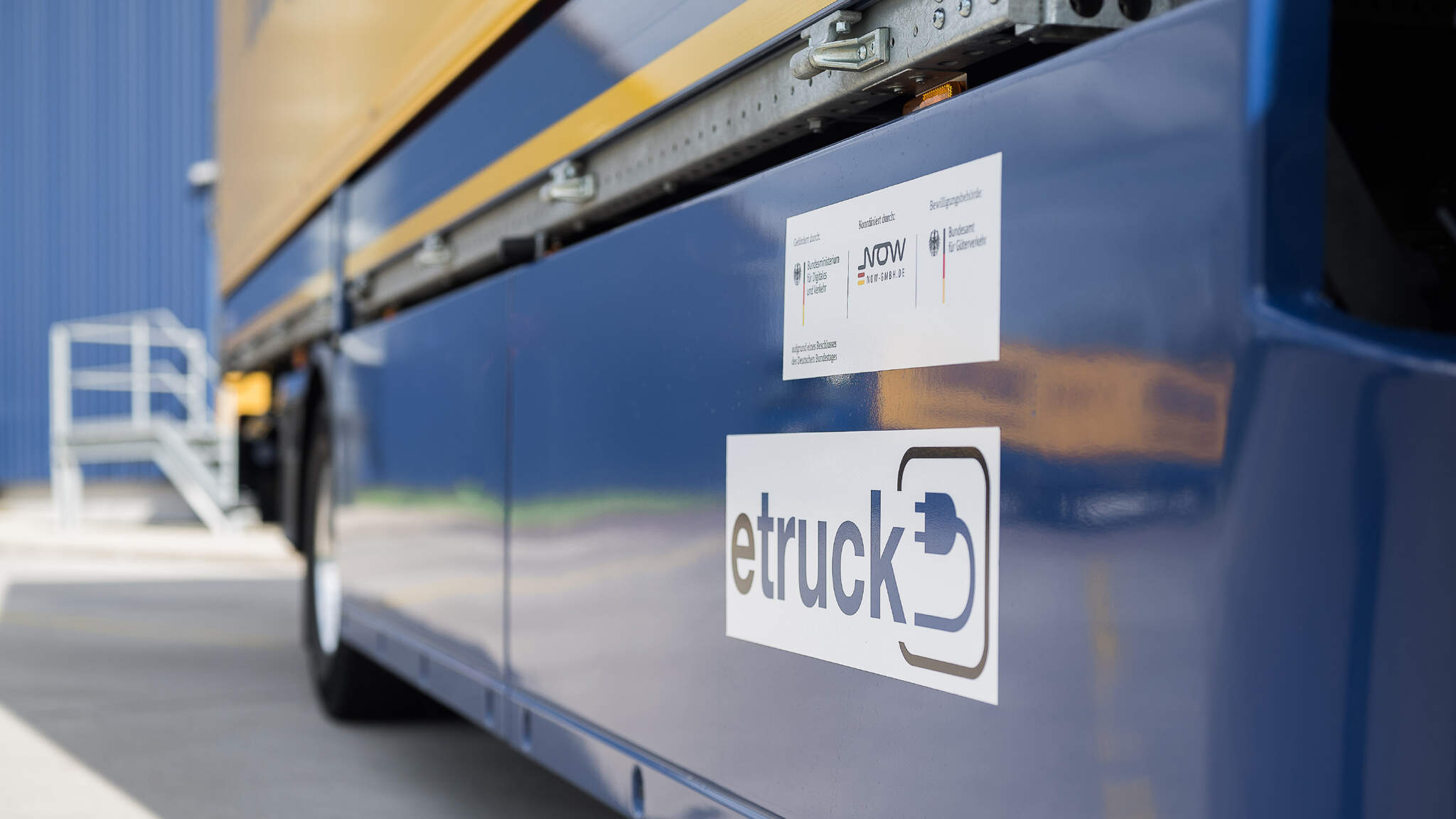The future of trucking starts now
Zero-emission commercial vehicles have finally made it out of the future lab. But there are still a few challenges for the new breed of trucks to master on the road to becoming a practical everyday technology.

The European Union has officially ushered in the end of the era of truck combustion engines based on fossil fuels (diesel, LNG/CNG). Following its final adoption of revised EU Regulation 2019/1242 at the start of this year, commercial vehicle manufacturers must reduce average CO2 emissions for newly registered trucks by 90 percent by 2040 compared to the baseline year of 2019.
In just two decades, then, the logistics industry will have to pull off the biggest transformation in the road transport of goods since automobiles replaced horse-drawn carriages. The task now is to turn zero-emission vehicles (ZEVs) from an aspirational technology into practical trucks that reliably fulfill their value proposition by executing a wide variety of freight-forwarding tasks.
However, this doesn’t mark the beginning of the ZEV journey. The starting gun for this transformation was fired five years ago with the adoption of EU Regulation 2019/1242. Since then, initial fleet targets have presented commercial vehicle manufacturers with the challenge of reducing the average emissions of newly registered vehicles by 15 percent from 2025 and by 30 percent from 2030 (now increased to 45 percent). The ZEV vision also crops up in other regulations. For example, it features in the five new CO2 classes for truck toll systems, which were adopted by all EU member states in 2022. This new classification was promptly implemented in Germany and Austria at the start of this year.
The transition has begun
OEMs have adapted their strategies accordingly. Back in the fall of 2019, market leader Daimler Trucks announced it would switch all production over to battery-electric vehicles (BEVs) and fuel-cell electric vehicles (FCEVs) within two decades. And these changes aren’t limited to the EU, either: other states have also undertaken to phase out the traditional combustion engine. In Norway and the US state of California, for example, the beginning of the end of the classic combustion engine for trucks came five years earlier than the EU.
All established OEMS—as well as some start-ups and interlopers from other sectors—made corresponding investments in new production facilities and supplier networks worldwide. For manufacturers, the primary focus is on powertrain electrification and the production and procurement of high-performance traction batteries and fuel cells.
As of today, initial production BEV truck models with ranges of 300 kilometers—and soon also 500 kilometers—are available for short- and even long-distance transport.
As of today, initial production BEV truck models with ranges of 300 kilometers—and soon also 500 kilometers—are available for short- and even long-distance transport. By contrast, FCEV trucks with ranges of over 700 kilometers aren’t expected to be available as production models until toward the end of this decade. According to EU rules, hydrogen internal combustion engine vehicles (HICEVs) and trolley trucks powered by overhead wires are also classified as ZEVs. In both cases, however, there are neither practical, mature technologies on the market nor plans to expand infrastructure. As such, these emission-free truck technologies won’t be appearing in large numbers on European roads for the foreseeable future—if at all.
The same goes for synthetic fuels: the revised EU regulation doesn’t regard combustion engine trucks running on biofuels or e-fuels as zero-emission vehicles, and neither are any future toll benefits foreseen for them. Only vehicles that can be shown to run exclusively on green, electricity-based fuels have a chance of being registered in the “e-fuels only” class after 2040. But all the legal details for this are still lacking.

Question marks over e-fuels
And the political will is questionable as well. Although agreement was recently reached at the EU level to consider the use of e-fuels in the future, it’s currently impossible to say whether such tentative commitments will ever evolve into regulations that can attract the majority support they’d need to become legally binding. Since the production capacity for such fuels is limited, they certainly won’t be a dependable way for OEMs to reach their fleet targets. Moreover, this technology path doesn’t allow emissions of air pollutants (nitrogen oxides, particulates, etc.) to be brought down to zero. And that remains an important consideration, especially for cities and metropolitan areas.
Adoption of the revised EU 2019/1242 sets the legal framework and lays down the technology options. But to make those technologies suitable for everyday use, urgent work needs to be done on the following points:
Public truck charging infrastructure: swift implementation of the EU regulation for the installation of fast recharging stations by 2030, known as the AFIR regulation: at least every 60 kilometers along major highways, every 100 kilometers along the entire trans-European transport network, and in urban nodes.
Municipal energy grids: swift creation and implementation of expansion plans for power supply in industrial zones.
Legal norms and standards: swift revision of the rules and regulations governing the use of zero-emission vehicles and renewables, such as technical rules on fire prevention, hazardous goods, etc. But financing guidelines and social legislation should also be punctually adapted, especially as they apply to SMEs.
Security of investment: laws and regulations need to be dependable, so private investors have the planning certainty they need for their undertakings.
Meanwhile, the most important point of all is the constructive cooperation of everybody involved. What is needed is collaboration geared toward solutions and implementation.
As part of its sustainability and climate protection strategy, DACHSER is preparing itself for an incremental transformation to zero-emission vehicles and renewables. In concrete terms, this means continually increasing the number of BEV trucks, and subsequently FCEV trucks, in short- and long-distance transport in line with their performance, the charging infrastructure, and cost effectiveness.
It is equally important, however, to continue to avoid unnecessary and energy-intensive transport kilometers by ensuring high process and energy efficiency. Over the coming years, this means in practical terms continuing to use modern, fuel-efficient Euro 6 diesel trucks, doing even more to optimize load capacity by dint of well-trained specialists and new digital assistance systems, and planning tours even more effectively.
It is now clear, at any rate, that the intelligent logistics of the future will be founded on a combination of zero-emission vehicles and high efficiency.
Andre Kranke, Head of Corporate Research & Development at DACHSER